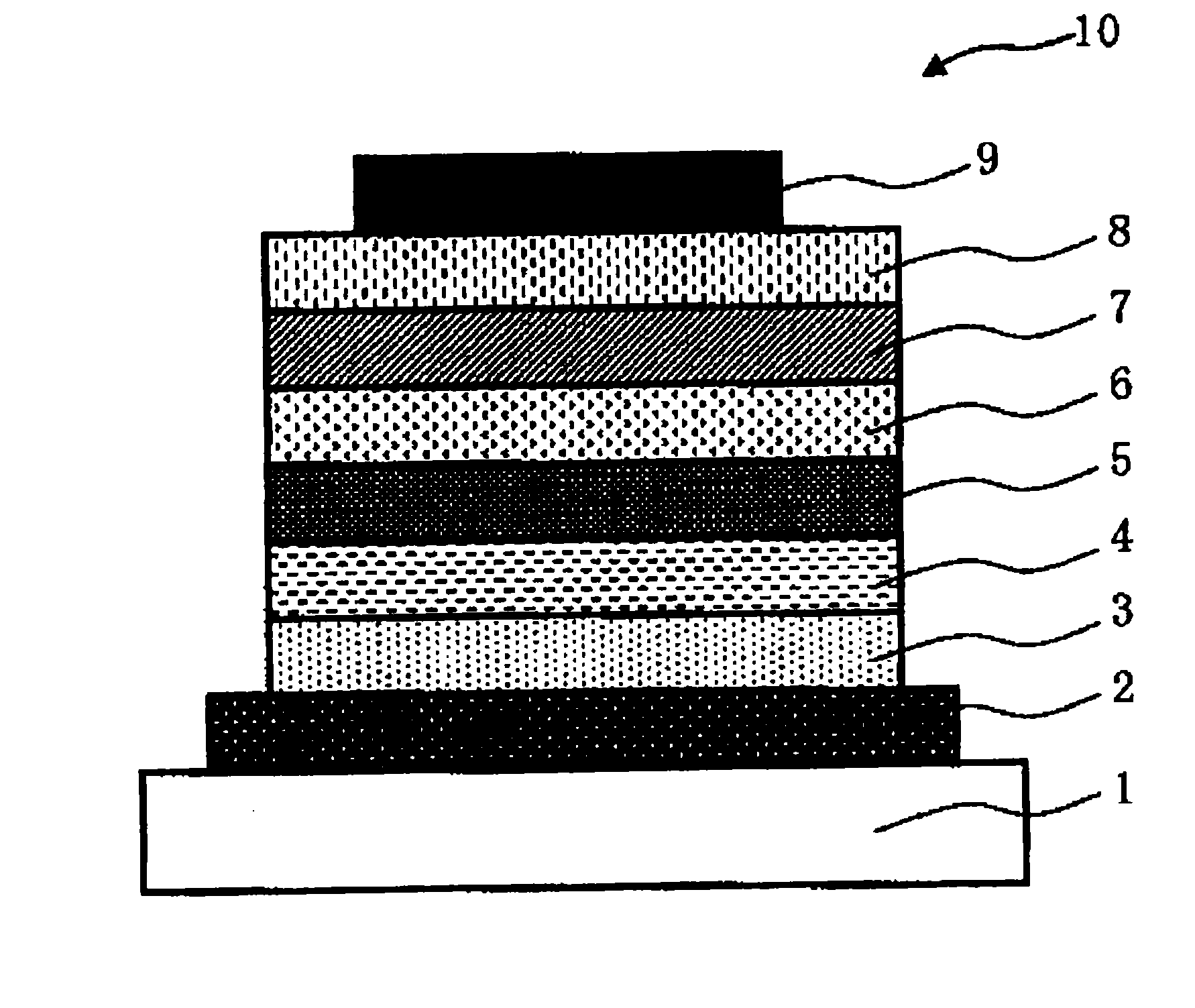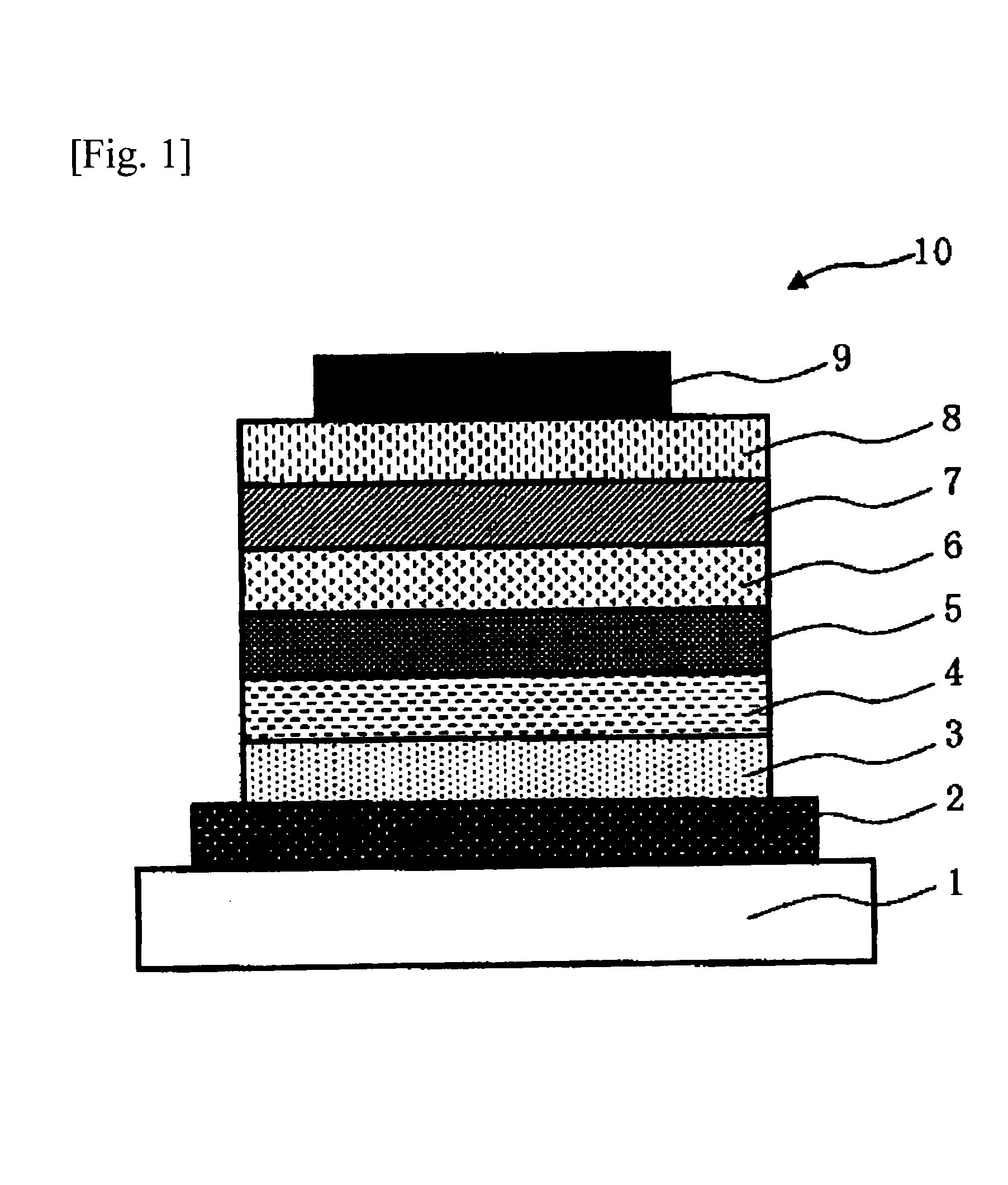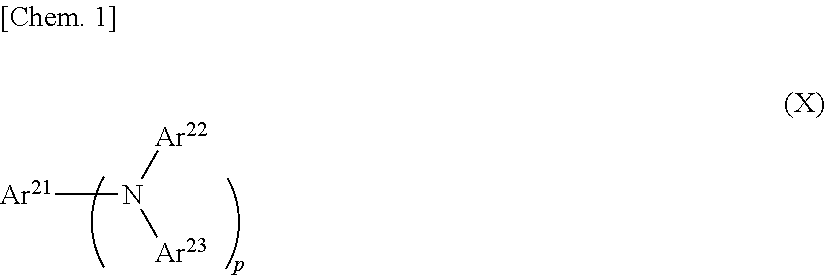Organic electroluminescence element, organic electroluminescence device, organic el display device, and organic el lighting
a technology of electroluminescence element and electroluminescence device, which is applied in the direction of di-anthraquinonyl dye, pyrene dye, anthracene dye, etc., can solve the problem of short life of the element, and achieve high luminescent efficiency, long working life, and high current efficiency
- Summary
- Abstract
- Description
- Claims
- Application Information
AI Technical Summary
Benefits of technology
Problems solved by technology
Method used
Image
Examples
example 1
[0365]The organic electroluminescence element shown in FIG. 1 was produced.
[0366]First, a substrate obtained by depositing a transparent conductive film of ITO in a thickness of 70 nm on a glass substrate 1 and patterning the transparent conductive film into stripes having a width of 2 mm to form an ITO anode 2 (deposited by sputtering; manufactured by Sanyo Vacuum Industries Co., Ltd.) was cleaned by subjecting the substrate to ultrasonic cleaning with an aqueous surfactant solution, rinsing with ultrapure water, ultrasonic cleaning with ultrapure water, and rinsing with ultrapure water in this order, subsequently dried with compressed air, and then subjected to ultraviolet / ozone cleaning.
[0367]Next, an ethyl benzoate solution (composition for hole injection layer formation) containing 2.0% by weight the hole-transporting high-molecular compound represented by the following (P1), which had the repeating structures, and 0.8% by weight 4-isopropyl-4′-methyldiphenyliodonium tetrakis(p...
example 2
[0389]An organic electroluminescence element was produced by the same method as in Example 1, except that the electron transport material (eH-2) shown below was used in the luminescent layer in place of the electron transport material (eH-1) used in Example 1. This element was evaluated in the same manner as in Example 1. The results thereof are summarized in Tables 3 and 4 together with the value of |EA1|−|EA2| and the value of |WF|−|EA3|.
example 3
[0390]An organic electroluminescence element was produced by the same method as in Example 1, except that the electron transport material (eH-5) shown below was used in the hole blocking layer in place of the electron transport material (eH-1) used in Example 1. This element was evaluated in the same manner as in Example 1. The results thereof are summarized in Tables 3 and 4 together with the value of |EA1|−|EA2| and the value of |WF|−|EA3|.
PUM
 Login to View More
Login to View More Abstract
Description
Claims
Application Information
 Login to View More
Login to View More - R&D
- Intellectual Property
- Life Sciences
- Materials
- Tech Scout
- Unparalleled Data Quality
- Higher Quality Content
- 60% Fewer Hallucinations
Browse by: Latest US Patents, China's latest patents, Technical Efficacy Thesaurus, Application Domain, Technology Topic, Popular Technical Reports.
© 2025 PatSnap. All rights reserved.Legal|Privacy policy|Modern Slavery Act Transparency Statement|Sitemap|About US| Contact US: help@patsnap.com



